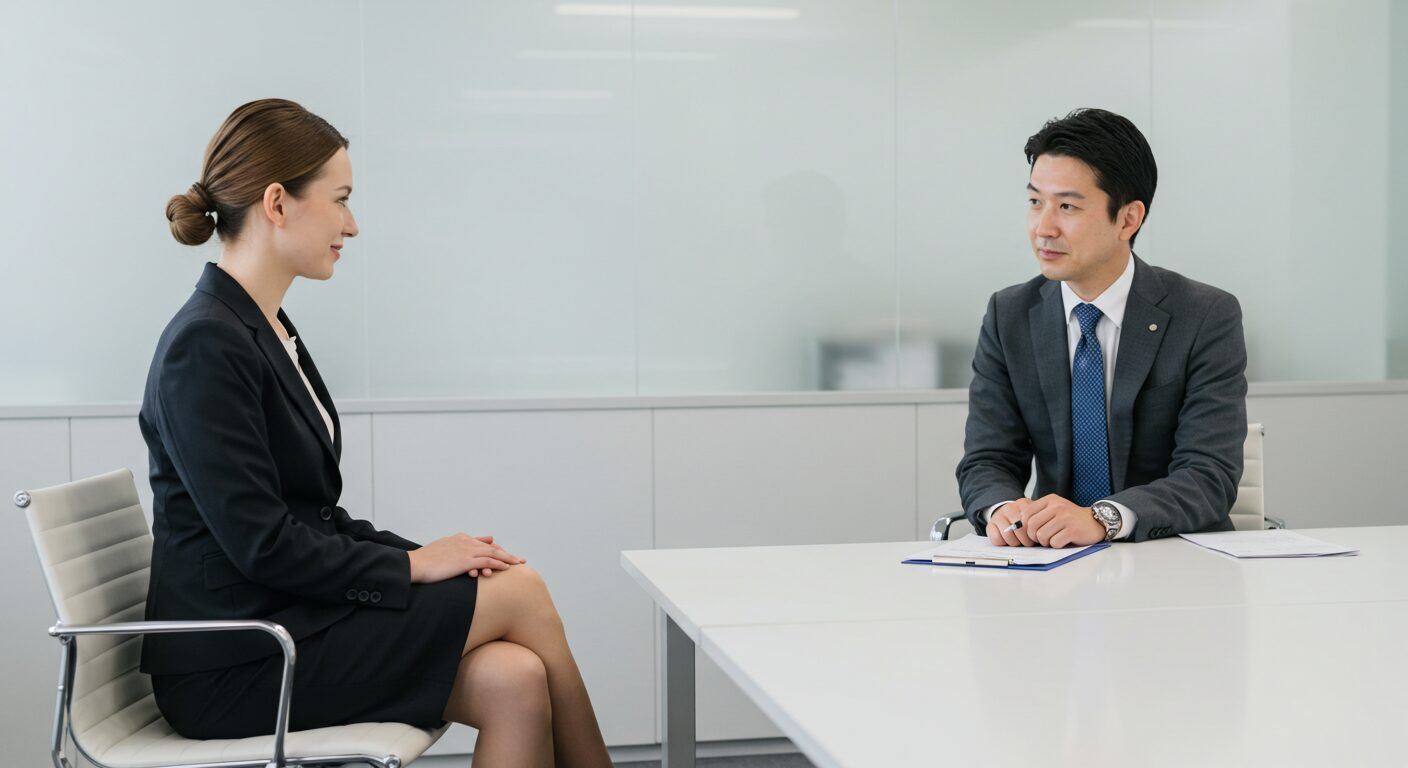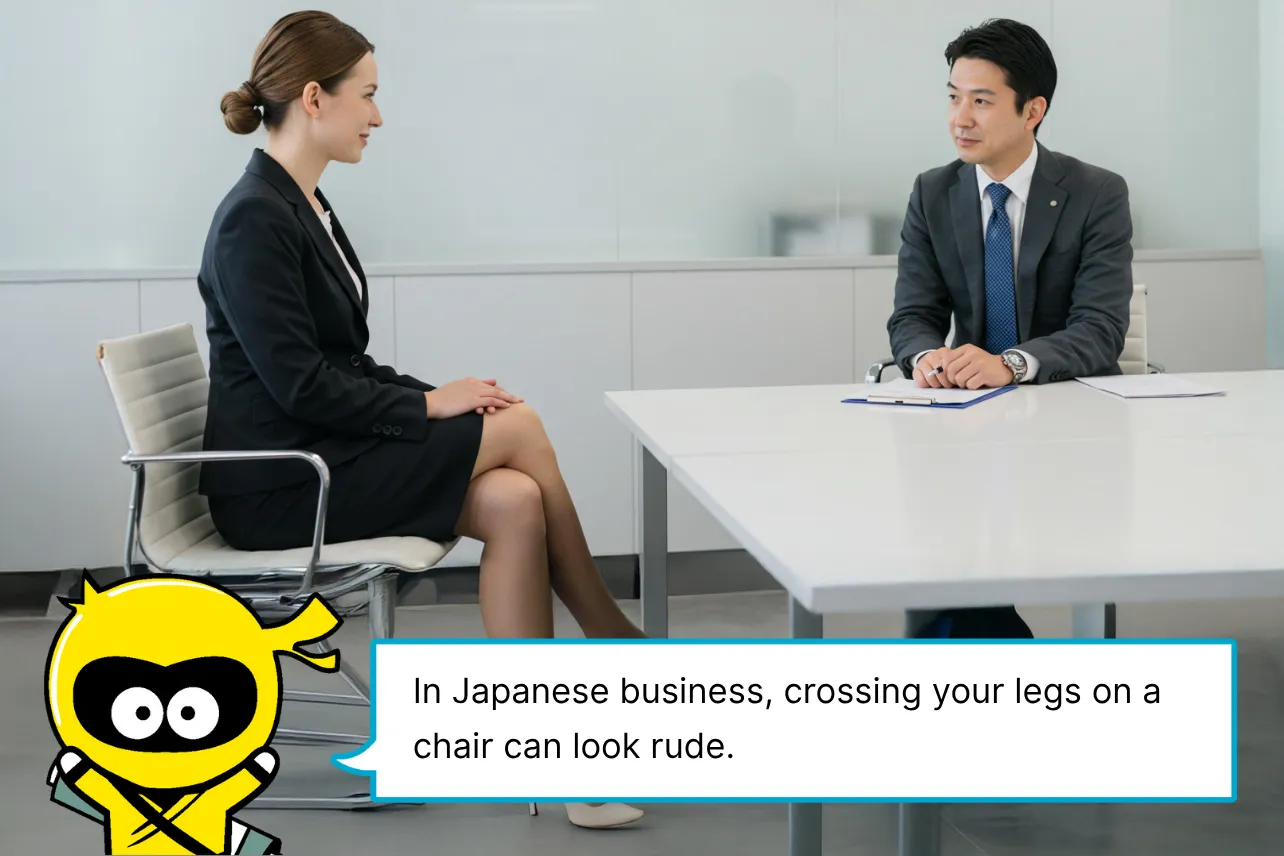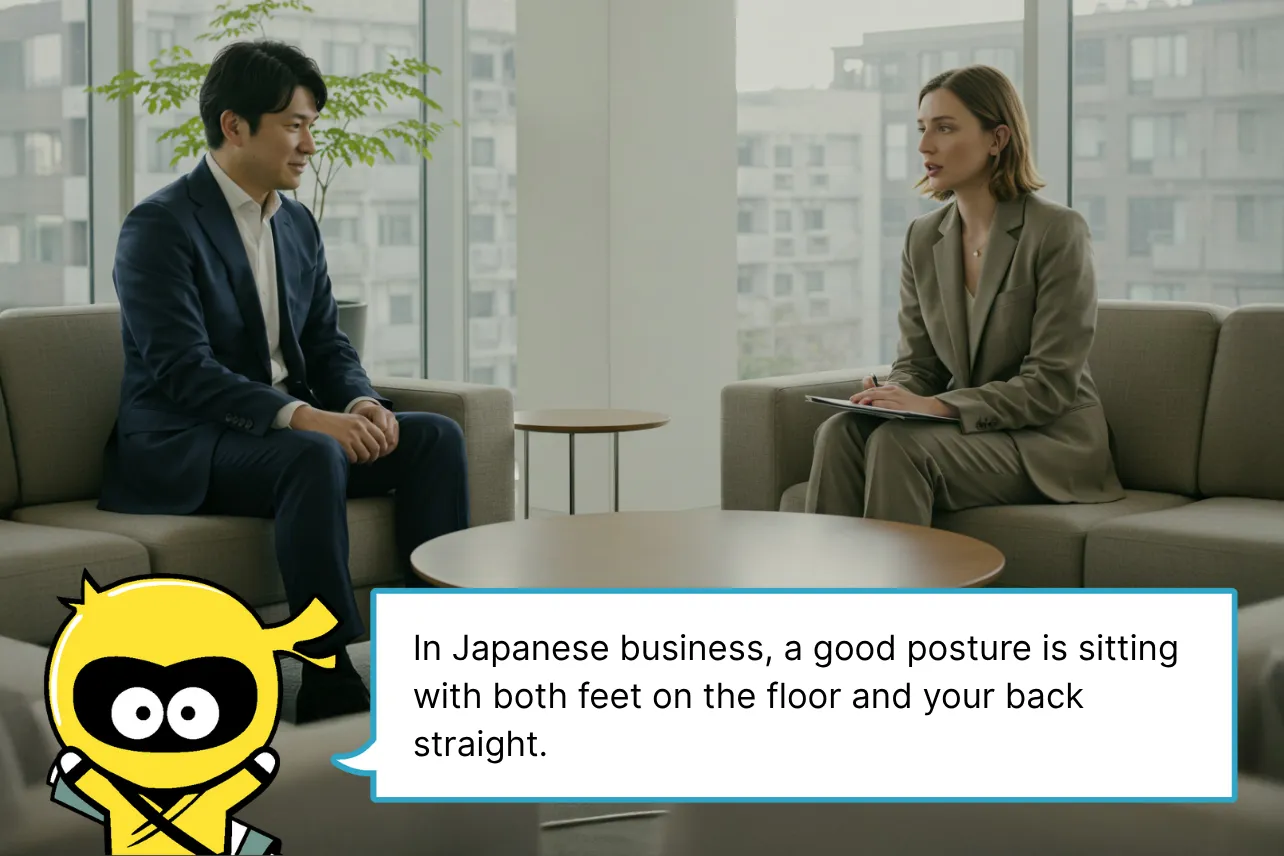

Have you ever found yourself crossing your legs during a meeting or interview in Japan without realizing it? While it’s a casual and relaxed gesture in many countries, in Japan it can sometimes be seen as disrespectful—especially in front of a boss or client.
In this article, we’ll explain why crossing your legs can be considered rude in Japan, what kind of sitting posture is expected in business situations, and how understanding these manners can help you make a positive impression. Whether you’re attending a job interview, a meeting, or a formal dinner, mastering this simple etiquette can greatly improve your professional image in Japan.
Is Crossing Your Legs Rude in Japan? Understanding Basic Business Etiquette


In Japanese business culture, the way you sit on a chair reflects your attitude and level of respect. Crossing your legs, while often a sign of confidence or relaxation in the West, can come across as too casual or even disrespectful in Japan—especially in front of superiors or clients.
For example, a foreign employee once shared how he unknowingly crossed his legs during a meeting. No one said anything at the time, but a Japanese colleague later advised him that it might be seen as impolite. He was surprised, realizing how easily cultural differences can cause misunderstandings.
The recommended posture in Japan is to sit upright, keep your feet flat on the floor, and maintain a straight back. Even during long meetings, this position communicates sincerity and professionalism—no extra cost, just awareness and effort.
Be mindful that habits like shaking your leg or spreading your knees too wide can also give a bad impression. For foreign visitors or exchange students, these small details might seem trivial, but they can affect how you’re perceived in Japanese society.
Sitting Etiquette in Japanese Business: The Impression of Crossing Legs
In Japan, your sitting posture during meetings or interviews says a lot about your character. Crossing your legs may appear confident or relaxed in some cultures, but in Japanese business it often signals a lack of focus or respect toward others.
The recommended way to sit is simple: keep your back straight, feet together, and both soles flat on the floor. This small habit improves your impression in job interviews, business meetings, and formal gatherings. Avoid sitting too deeply or too shallowly in the chair; balance and composure are key.
If you find yourself wanting to cross your legs during long meetings, take a short break or stretch to maintain proper posture. In Japan, even small gestures like these can build long-term trust and credibility in the workplace.
What If a Japanese Candidate Crossed Their Legs in a Job Interview?
If both the interviewer and the interviewee are Japanese, crossing one’s legs during an interview would almost certainly be considered rude. However, Japanese people tend to be stricter with fellow Japanese than with foreigners, who are often given more leeway due to cultural differences.
A Japanese friend who works as a recruiter once told me, “If a Japanese applicant crosses their legs in an interview, I wouldn’t hire them.” This shows that perceptions can vary between Japanese and non-Japanese applicants—and understanding this nuance can help avoid misunderstandings.
You might be interested in this
Why Crossing Your Legs in Front of a Boss or Senior Is Considered Rude
In Japanese society, showing respect toward superiors is fundamental. Sitting with your legs crossed can be interpreted as overly casual, or as turning your body away from the person you’re speaking with—both seen as impolite. While it may seem natural in the West, Japan’s culture of hierarchy and harmony (wa) makes such gestures less acceptable, especially in business settings.
The best practice is to sit with your back straight and both feet firmly on the floor. This simple posture conveys sincerity and attentiveness, helping to build trust—especially in meetings with clients or supervisors.
For longer meetings, you may feel tired and your posture may slip. In that case, take a short stretch during breaks to reset your body. These small acts of consideration can make a big difference in maintaining good relationships and achieving business success in Japan.
Japan vs. Other Countries: Comparing Cultural Attitudes Toward Leg Crossing


In many Western countries, crossing your legs while sitting is completely natural and often seen as a sign of confidence or comfort. However, in Japan it can signal a lack of discipline or respect, especially in professional settings. Such differences highlight how gestures can carry very different meanings across cultures.
The recommended posture in Japan is to sit with both feet together, back straight, and your body facing forward. This simple, cost-free adjustment can dramatically improve your business image and is especially useful for foreign professionals or job seekers in Japan.
Be careful not to insist that “crossing legs is normal abroad,” as this may come across as defensive or dismissive. Understanding and adapting to local customs is an essential key to success when working or doing business in Japan.
Conclusion
For many visitors, Japan’s expectations around sitting posture and leg crossing can be surprising. What’s considered a relaxed or confident gesture abroad may be interpreted as disrespectful in Japan, particularly in front of superiors or during formal events. This article has outlined key etiquette tips, real experiences, and practical advice for maintaining the right posture in different business situations.
Understanding Japanese culture goes beyond avoiding mistakes—it helps build trust and create positive experiences. With a few mindful adjustments, you can navigate meetings, interviews, and everyday encounters in Japan with confidence and respect.




